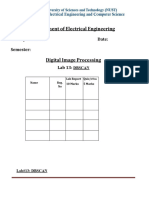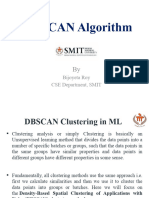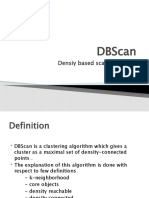0% found this document useful (0 votes)
37 views5 pagesDBSCAN Algorithm
The document outlines the steps of the DBSCAN clustering algorithm, which includes classifying points, discarding noise, and assigning clusters to core points. It also provides a Python code example that generates synthetic data, applies the DBSCAN algorithm, and visualizes the resulting clusters. The code demonstrates how to display clusters using different colors for better visualization.
Uploaded by
mkgroshniCopyright
© © All Rights Reserved
We take content rights seriously. If you suspect this is your content, claim it here.
Available Formats
Download as DOCX, PDF, TXT or read online on Scribd
0% found this document useful (0 votes)
37 views5 pagesDBSCAN Algorithm
The document outlines the steps of the DBSCAN clustering algorithm, which includes classifying points, discarding noise, and assigning clusters to core points. It also provides a Python code example that generates synthetic data, applies the DBSCAN algorithm, and visualizes the resulting clusters. The code demonstrates how to display clusters using different colors for better visualization.
Uploaded by
mkgroshniCopyright
© © All Rights Reserved
We take content rights seriously. If you suspect this is your content, claim it here.
Available Formats
Download as DOCX, PDF, TXT or read online on Scribd
/ 5


























































